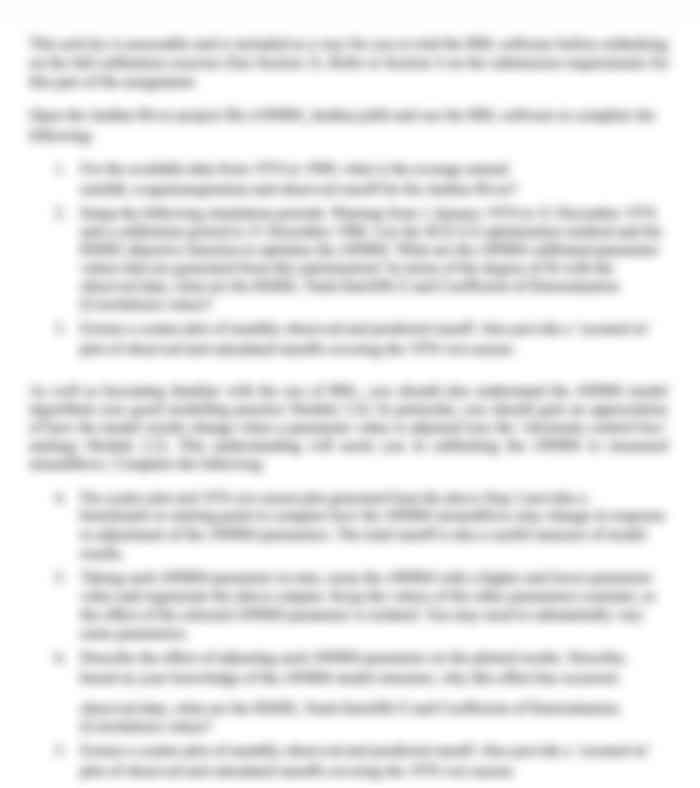SUS scenerio Based Assessment
Scenario
You are working for Factoriffic Custom Lamps, a manufacturing company. The company produces lamps in an old and inefficient factoryFactory X. You have just been employed to provide them with answers about how to improve the production line at Factory X, and how their current advertising campaign will impact their manufacturing schedules.
You arent the first person to have had this remit. Your position is as a replacement for a previous staff member who started the project but left before it was finished. Your task is to continue and adapt their work to help make recommendations for improvements to Factory X, potentially responding to increased demand resulting from a new advertising campaign.
You should treat the exercise as if you are working for your company (rather than doing a student project). Your tutor is your SME (Subject Matter Expert). Your assessor is your manager (who is unreachably busy and will only look at your final report).
The system
The system under study (SUS) is a small production line with two critical stages referred to here as Machine 1 and Machine 2. Orders for lamps come in and are queued until Machine 1 is free to start manufacture. After being processed in Machine 1, the lamps are queued again, waiting for Machine 2. There is a limited space available for the lamps to be queued (only four orders can wait in this space at most), and if this space is filled, Machine 1 must stop working until there is space. After processing in Machine 2, lamps are shipped to the customer that ordered them.
Hint:
Questions of interest
The company wants to answer the following questions:
Is the space available for lamps waiting for Machine 2 sufficient?
Could the system be improved if Machine 1 or Machine 2 were made faster?
Note that the company only has enough money to improve one machine and can at most improve speed by a factor of two.
What would happen to the
current
system if the companys current advertising program were successful, and the rate at which orders arrived increases by 25%?
Would the above improvements help?
Your Task
Your task is to work through all the steps in a simulation model and prepare a report to make informed recommendations based on the results of your simulation.
Associated files
Download the following files.
Simulation code:
factory_simulation_2.jl
Example code to run a simulation:
factory_simulation_2_run.jl
Measurement
data:
measured_times.csv
Part 1
You are provided with Julia code that a previous staff member has written to simulate the system. However, they did not document the code well. That means you have a bit of work to do. The first part will be to conduct VV&A (Verification, Validation and Accreditation) on the simulation.
You must build an understanding of the code, and document it. That means you will need to reverse engineer the assumptions, the state model, the events, and entities in the system, as well as any assumptions built into the code. You will document it using techniques described in Module 3: Validation. Document your system state, events and
create the various diagrams required.
Data has also been provided for the service time distribution for Machine 1 and Machine 2. You will need to use skills developed in Module 4: Including Data into Simulations to analyse this data. You will then need to improve the simulation model
and the code to correct any assumptions that need correction.
Verify that the code has no bugs and that the output data is sound. Develop a set of
unit tests to do so.
In performing these tasks, think of your tutor as an SME who can give you advice about the SUS. Assume they dont understand simulations, but can help you work on your understanding of the original simulation and how it may or may not be defective.
Hint:
Part 2
In the second part of this assessment, you will use your improved simulation code to explore the SUS and answer the questions of interest.
Write a simulation harness to automate running the simulation code over a range of
parameters.
Explore the simulation parameters to determine: (i) how long to run each simulation,
(ii) how many independent realisations you will use, and (iii) how much burn-in time is needed.
Explore the system parameters to determine: (i) what range of parameters you will include in your possibility space, and (ii) with what resolution you will explore those
parameters.
Use the simulation to generate data that can answer the questions of interest.
Analyse the data from the simulations (using what you learned in Module 5) and
generate plots to illustrate the answers.
Part 3
Having run the simulation, the third part of this project is to write a report from your point of view as an employee of the manufacturing company. The report should be written to your manager, and it should provide convincing results that they can use to make improvements to the production line.
The report should take the form shown in Module 6: Reporting and Communicating customised to the particular problem you are working on.
It should be concise, but contain enough detail for a reader to understand and be confident about:
your verification and validation process, and
your results and recommendations.
Ensure that the questions of interest are answered, and that the answers are very clear to a busy reader.
Requirements
You will submit your assessment as a report through MyUni. Save your report as a PDF and upload it to the assessment link. Your tutor will assess your work and provide feedback based on reading your report alone. The assessor will not
your code, or
your data.
You do not need to include your Julia code or data in the report. Your report must be convincing without access to such details.
It is important to be concise so you will lose marks if the report wastes your managers reading time. Assume your manager is very busy and will read the report quickly (and somewhat carelessly).
Consult the assessment rubric for more detail about preparing your submission. Questions can be posted to the relevant assessment Discussion Board.

